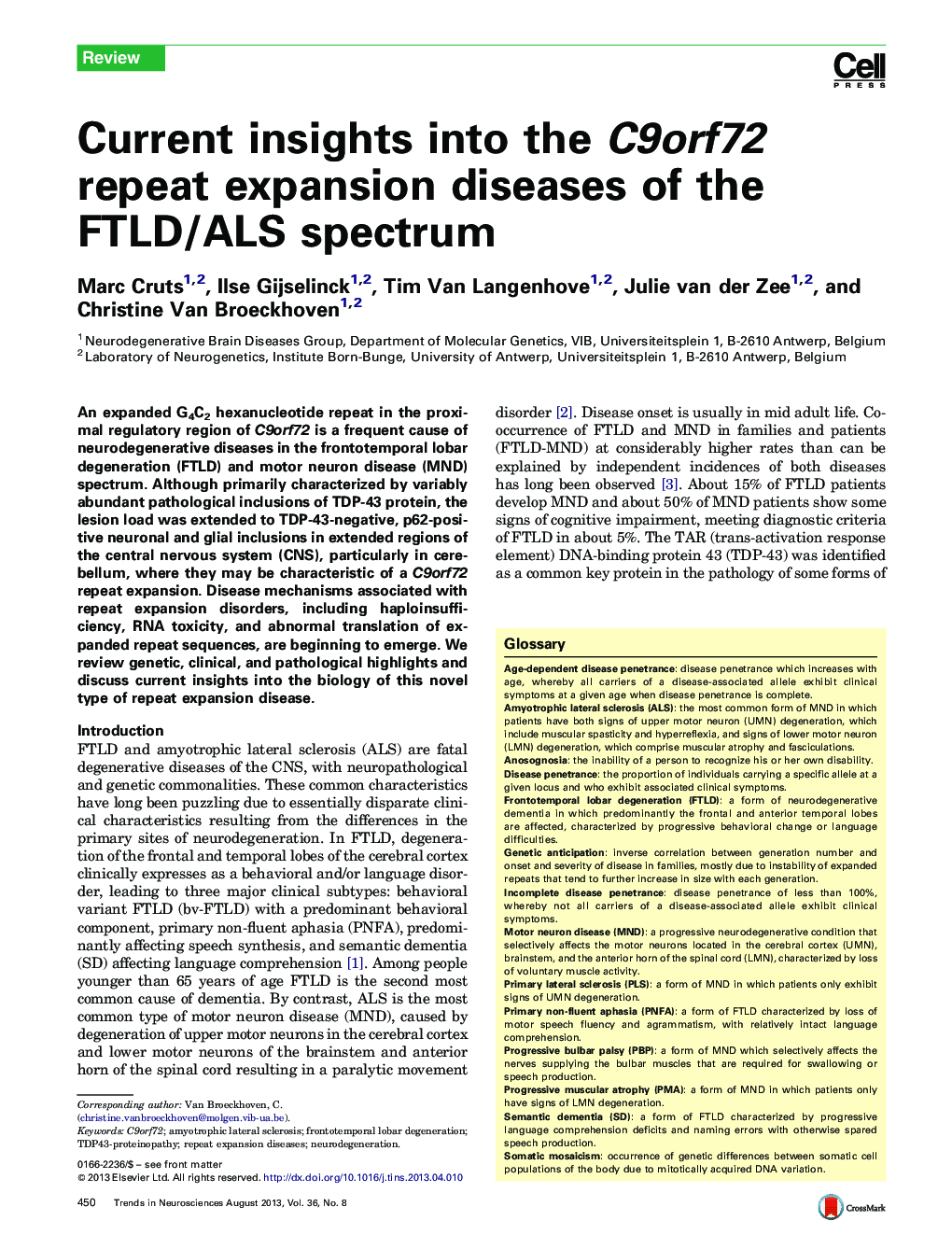| Article ID | Journal | Published Year | Pages | File Type |
|---|---|---|---|---|
| 4354373 | Trends in Neurosciences | 2013 | 10 Pages |
•C9orf72 repeat expansions are the most frequent cause of FTLD/ALS spectrum diseases.•Expanded C9orf72 repeats are associated with diverse neurological diseases.•Expanded C9orf72 repeats lead to diverse pathological inclusions in the CNS.•Not all families in the FTLD/ALS spectrum are genetically explained.
An expanded G4C2 hexanucleotide repeat in the proximal regulatory region of C9orf72 is a frequent cause of neurodegenerative diseases in the frontotemporal lobar degeneration (FTLD) and motor neuron disease (MND) spectrum. Although primarily characterized by variably abundant pathological inclusions of TDP-43 protein, the lesion load was extended to TDP-43-negative, p62-positive neuronal and glial inclusions in extended regions of the central nervous system (CNS), particularly in cerebellum, where they may be characteristic of a C9orf72 repeat expansion. Disease mechanisms associated with repeat expansion disorders, including haploinsufficiency, RNA toxicity, and abnormal translation of expanded repeat sequences, are beginning to emerge. We review genetic, clinical, and pathological highlights and discuss current insights into the biology of this novel type of repeat expansion disease.
